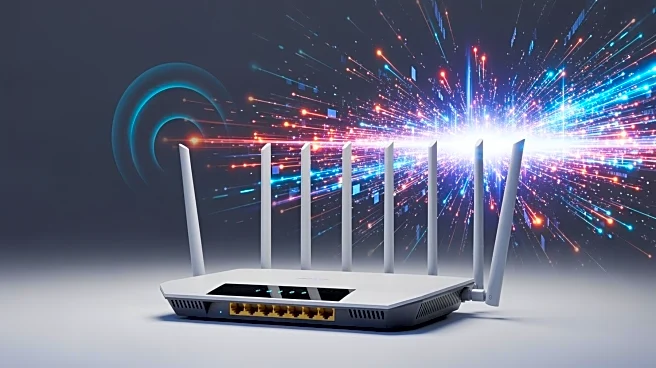What's Happening?
CNET has published an article discussing the increasing relevance of symmetrical internet speeds in today's digital landscape. Traditionally, internet connections have been asymmetrical, favoring download speeds over upload speeds. However, as internet usage
evolves, the need for balanced upload and download speeds has become more critical. Symmetrical internet speeds offer equal bandwidth for both uploading and downloading data, addressing issues such as data bottlenecking that can slow down file uploads and video calls. The article highlights that symmetrical speeds are particularly beneficial for remote workers, gamers, content creators, smart home enthusiasts, and large households, where multiple devices and high data usage are common.
Why It's Important?
The shift towards symmetrical internet speeds reflects changing internet usage patterns, where uploading data is as crucial as downloading. This change is significant for various stakeholders, including remote workers who rely on stable video calls, gamers who need consistent upload speeds for streaming, and content creators who frequently upload large files. As more households adopt smart home devices, the demand for reliable upload speeds increases. Symmetrical speeds can enhance the overall internet experience, reducing frustrations related to slow uploads and improving the functionality of connected devices. This trend may influence internet service providers to offer more symmetrical plans, potentially impacting pricing and availability.
What's Next?
As the demand for symmetrical internet speeds grows, internet service providers may expand their offerings to include more fiber-optic plans capable of delivering these speeds. Consumers might need to evaluate their current internet plans and consider upgrades if they experience frequent upload-related issues. The article suggests running speed tests to determine if symmetrical speeds would benefit users. Additionally, the pricing of symmetrical plans may vary, prompting consumers to weigh the cost against the benefits of improved upload speeds. This shift could lead to increased competition among providers, potentially driving innovation and better service offerings.
Beyond the Headlines
The move towards symmetrical internet speeds could have broader implications for digital equity, as access to high-speed internet becomes increasingly essential for participation in modern society. This trend may also influence the development of new technologies and applications that rely on fast, reliable internet connections. As more users demand symmetrical speeds, there could be a push for infrastructure improvements, particularly in underserved areas where high-speed internet is less accessible. This could contribute to closing the digital divide and ensuring more equitable access to internet resources.













